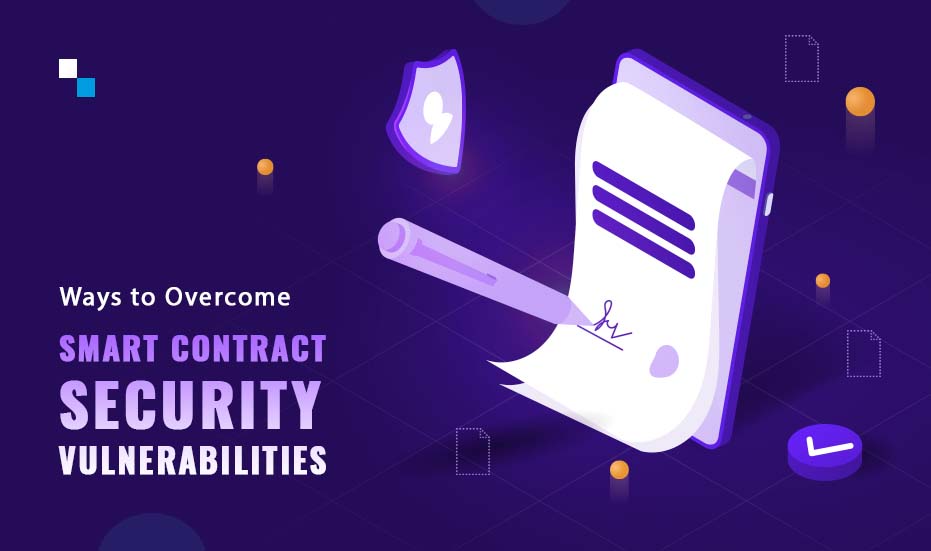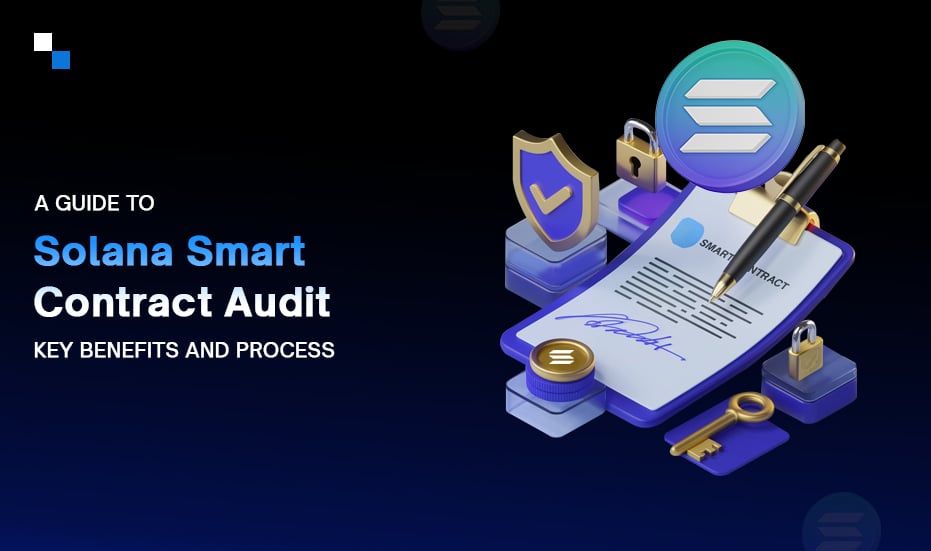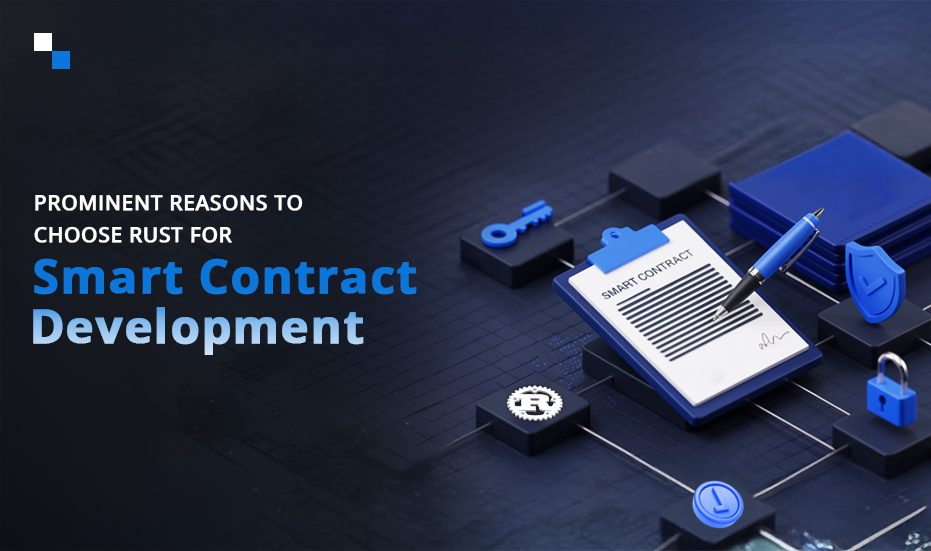
What are the Types of Tokens Incentivizing Token Holders?
April 13, 2023
Start With ERC-865 Token Development For Streamlined Transactions
April 18, 2023Let’s face it, smart contracts are an ideal solution with countless benefits in terms of cost efficiency, precision, and trust when compared to traditional contracts. However, smart contracts, just like other programs, are prone to several vulnerabilities and errors. Thus, it’s imperative to identify ways to overcome smart contract security vulnerabilities. However, before moving any further, have a look at some prevailing risks that may arise during the smart contract development process.
Prevalent Smart Contract Security Vulnerabilities
- Reentry Attack
The reentry attack occurs when malicious agents use “reentrancy bug” to repeatedly call a function in the smart contract before the execution of the existing program. Exploiters recursively call a function to withdraw contract’s funds and pose serious threats to the users’ data.
- Frontrunning
Frontrunning is the process of understanding the processing order of forthcoming transactions and placing a transaction ahead in the queue to perform nefarious activities. Malicious actors can analyze smart contact functions and instructions in advance by assuming their time and order of execution. Such attacks occur mostly on public Blockchain platforms and are also used by miners during crypto trading.
- Integer Overflow
Developers encounter integer overflow in smart contract development when the program executes a mathematical operation that exceeds the minimum or maximum number represented by the data types. For instance, Solidity manages up to 256-bit numbers. Hence, incrementing and decrementing the value by 1 would result in overflow and underflow respectively.
- Timestamp Dependence
Hackers can manipulate block.timestamp function easily as it contains the transaction code and is used to execute critical logic. It’s very easy to identify parts of the smart contract code where timestamp dependence affects the behavior of the contract.
- DoS(Denial of Service) Attack
Attackers recursively call the bid() function to counter other users from placing their bids and halt the contract from functioning properly. Moreover, fallback() function could also be used by hackers to reverse any payment within the network.
- Force-feeding
Malicious actors manipulate balance checks by forcibly transferring Ether to smart contracts. It could be done by creating and funding a contract with 1 Wei and calling a function that doesn’t allow the code to be invoked.
Get the Best Smart Contract Audit Services
Schedule Free DemoProminent Audit Techniques to Vanquish Smart Contract Security Vulnerabilities
A smart contract development expert could use either automatic auditing or manual auditing technique to execute a complete audit operation.
1. Manual Auditing
A team of smart contract development services providers manually reviews the code to find reentry attacks, compilation issues, and poor encryption practices. In addition to identifying glitches in program code, performing a manual audit allows auditors to detect hidden errors and design issues. Here are some manual auditing techniques followed by smart contract security auditors:
- Documentation Analysis
It is one of the most time-consuming manual auditing techniques as auditors have to review the entire document along with details like product design and architectural requirements. The technique allows auditors to understand program constraints, asset flow, the interaction between contracts, threat models, risk mitigation measures, and more.
- Specification Analysis
It is the process of monitoring detailed project documentation that outlines product specifications and sketches the functional design. Auditors can identify any shortcomings or assumptions made during the development and design of the project by performing specification analysis.
2. Automated Auditing
Smart contract security audit tools are used to automatically locate errors and detect bugs. Automated auditing is performed on projects with faster time to market. Here are some auditing methods that fall under automated auditing:
- Fuzzing
Fuzz testing is the process of testing contracts automatically by integrating them with unexpected and random outputs. Fuzzing enables auditors to identify smart contract vulnerabilities such as memory leaks, crashes, failed built-in code insertions, and more.
- Testing
Smart contract testing is performed to check if the program behaves as intended. The technique is similar to software development testing which helps auditors to indicate the project maturity and provide several edge cases for vulnerability assessments.
- Static Analysis
It is a combination of data flow and control flow analysis. From infinite loops to return statements, control flow analysis is performed to inspect control flow through the entire program. On the other hand, data flow analysis determines how data is used, stored, and reorganized throughout the program.
Final Thoughts
Performing all smart contract security techniques as listed above requires a full fledged team of smart contract auditors. However, not all auditors are capable of executing the smart contract auditing process. Thus, it is advisable to get in touch with a top provider of smart contract development services like Antier in such a situation.
The company owns a team of skilled security auditors to help businesses provide smart contract development and auditing services as per their technical requirements. Antier has served clients from diverse industry verticals with advanced smart contract development services over the past couple of years. Get in touch with our security auditors today to share your smart contract development needs.



